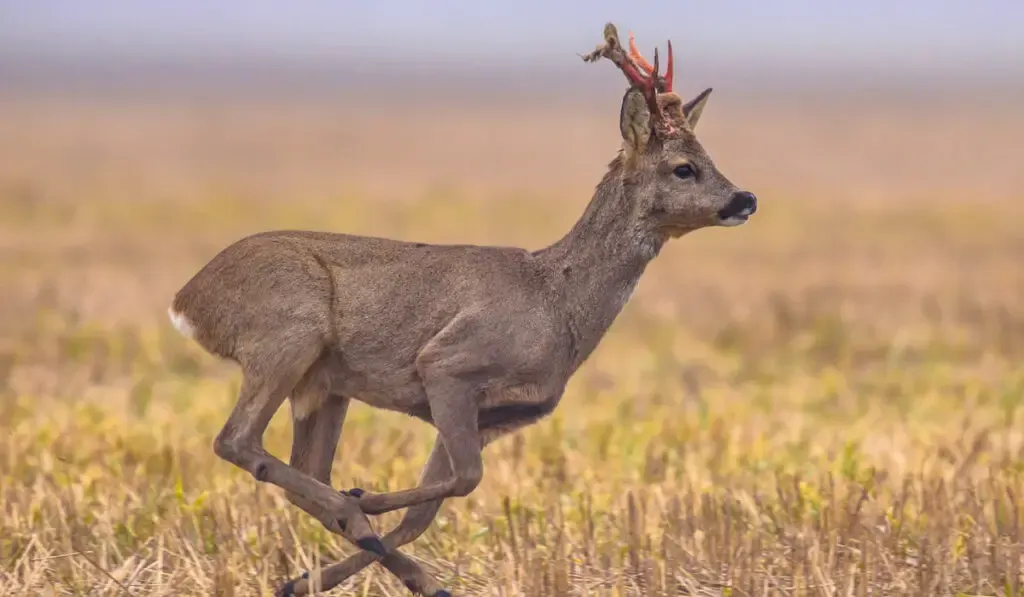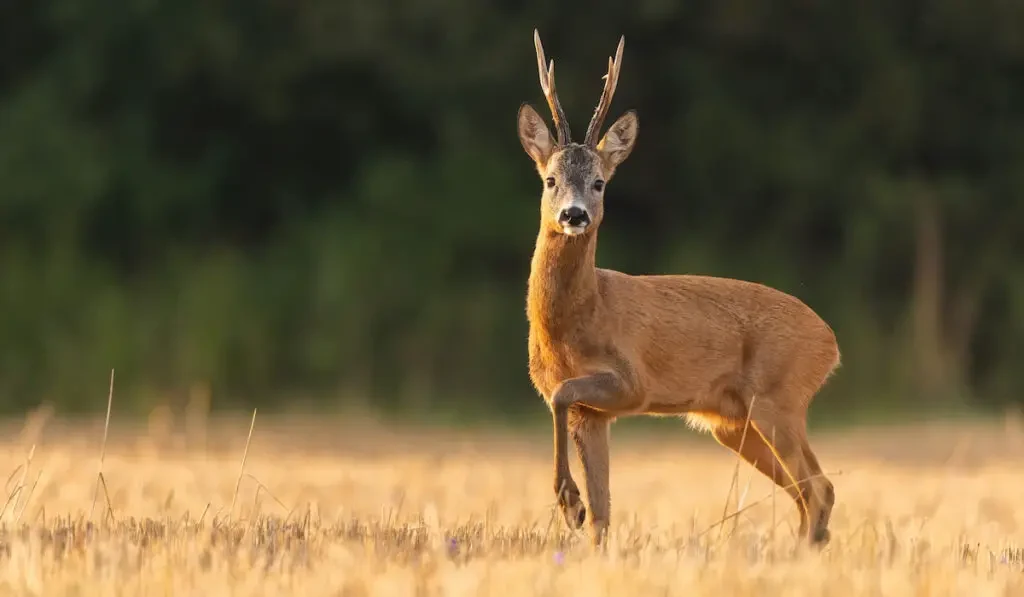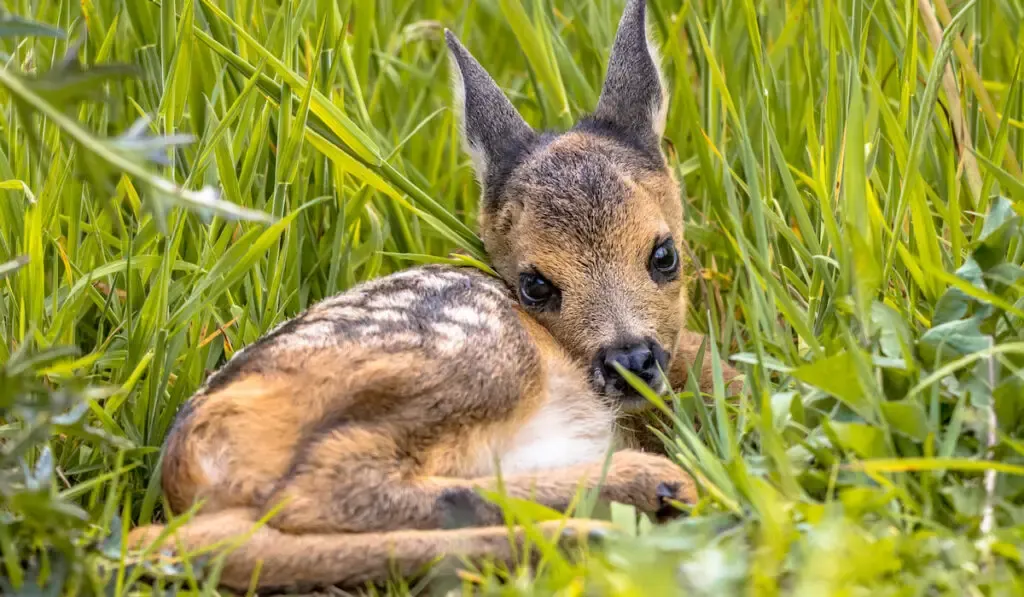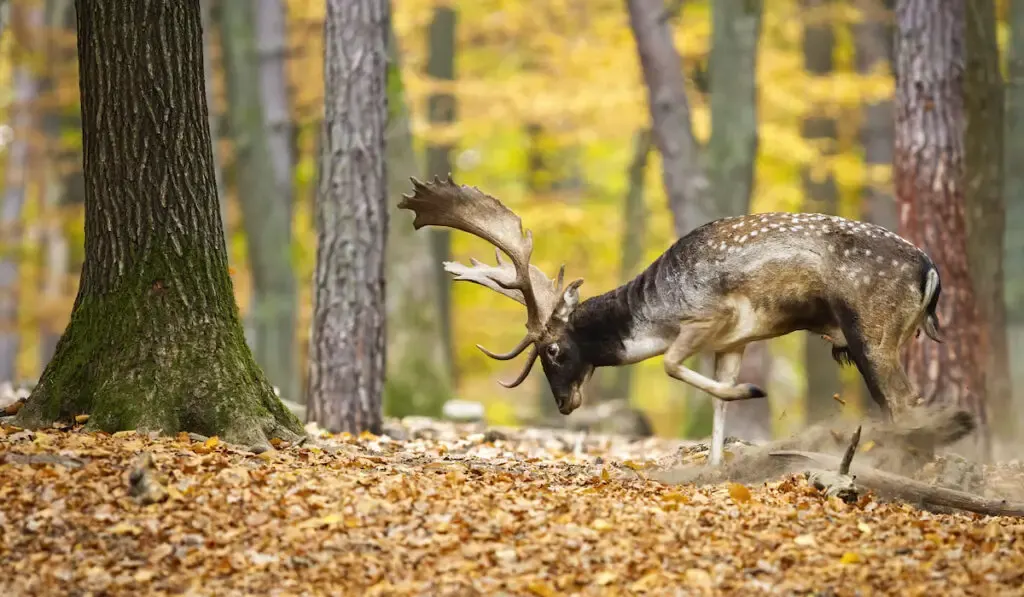Sometimes, a deer in the headlights can be much more than a mental state.
Real deer can be caught in the headlights of a fast-moving vehicle. If the deer ends up being hit by a vehicle, it could die or end up injured, often with a broken leg.
Can a deer survive a broken leg?
In many cases, deer with broken legs survive. In fact, the injured animal would typically heal without any help. Besides the fact that they heal on their own, their lifestyle is sometimes unaffected by the injury. Deer with a broken leg may still move around, jump, run, and reproduce as usual.
Curious to know how deer can survive such injury without any help? We’ll explore this topic in more detail in the rest of the article.

Table of Contents
Can a Deer Survive a Broken Leg?
Deer are known to fully heal from various serious injuries without any medical assistance.
Like the many other injuries deer are exposed to, they can survive a broken leg.
In fact, they would sometimes proceed with their usual lifestyle with a broken leg.
Back Leg Injuries
Deer can survive a broken back leg, but they may be more painful than a broken front leg because hind legs have more nerve fibers.
Like various deer injuries, a broken back leg can affect antler development. This adverse effect on antlers might be due to nerve issues stemming from the injury.
Experts believe that the affected nerves may stimulate the antler growth center. This will then lead to the growth of an antler with an abnormal form.

With broken back legs, the growth of the antler on the opposite side is what is affected.
This reverse effect is because nerve pathways from the body cross to opposite sides when they enter the brain.
For example, if the left hind leg is broken, the right antler may grow to be deformed.
Similarly, if the right hind leg is broken, the left antler would be affected.
Front Leg Injuries
Deer can also survive a broken front leg. Broken front legs may also affect the antler growth center, just like the hind legs.
But an abnormal antler is more likely to grow from a broken back leg than a broken front leg.
This might be so because of the higher number of nerve fibers in the back legs.
While a broken front leg might heal completely, the brain may retain information about the injury.
So, the abnormal antler growth may continue for many years.
Can a Baby Deer Survive With a Broken Leg?

In the wild, the chances of a baby deer surviving with a broken leg are low, especially when there are predators around.
While some adult deer might be able to move around just fine with broken legs, the babies might not.
A baby deer with a broken leg will become slower, making it easier for predators to capture them.
When baby deer are injured, it is better if they are removed from the wild.
If found, they can be taken to a vet for treatment, or you may wait for the wound to self heal.
Once an injured baby deer recovers from its injury, you should release it back in the wild with other deer, preferably in the same area you found it.
Can a Deer Survive With 3 Legs?
Deer can survive with 3 legs.
While you might expect that the missing leg would significantly affect their maneuverability and leave them at risk, it doesn’t.
Deer can walk, jump, and run adequately with only 3 legs. In fact, some 3-legged deer were reported to have lived more than 5 years after sustaining an injury resulting in loss of a limb.
The ability of deer to survive with 3 legs might be aided by the counterbalance their tail offers. It may also be facilitated by the tripod stance they assume.
What to Do if You See a Wild Deer Limping

Compared to baby deer, adult wild deer cannot be well handled, and they do not tolerate confinement.
If you see a wild deer limping, move toward it. If it runs away, then it will most likely survive.
But if it does not run from you, call an appropriate wildlife authority since such deer will most likely not survive.
Note that the wildlife authority will not capture the injured deer or try to treat it. Most times, such deer are euthanized to put them out of their misery.
Can a Broken Leg Be Fixed on a Deer?
The broken leg of deer can be fixed especially if they are babies. The adults are usually not captured for treatment since they do not tolerate confinement well.
In fixing a broken leg on a baby deer, sometimes vets may attach a splint. Other times, when the injury is more serious, they may perform surgery.
If the wound is infected or prone to infection, the vet may administer antibiotics. The vet may also advise that the leg be amputated.
All in all, the vet should know what to do after assessing the deer.
Hoofed animals (like horses) who have had their limb amputated can get fitted for prosthetics.
However, this option is usually not considered for deer because the process is expensive and painful.
In most cases, instead of giving the adult deer prosthetics, they are euthanized. The option of euthanasia is commonly applied to wild deer.
Wild deer usually become stressed when they are in close contact with humans. As a result of the stress, they panic and can reinjure themselves while being treated.

Final Take
Deer can survive with a broken leg. In most cases, the injured leg will even heal on its own.
After the leg heals, the deer can live for many years. Some deer even lose a limb and go on to live just fine with just 3 legs.
Resources
- https://www.bellinghamherald.com/living/article22292064.html
- https://www.pgc.pa.gov/Wildlife/WildlifeSpecies/White-tailedDeer/Pages/AskaDeerQuestion.aspx
- https://www.deerassociation.com/leg-injuries-can-affect-antler-growth/
- https://animalchannel.co/man-saves-fawn/
- https://www.ekathimerini.com/252083/article/ekathimerini/community/baby-roe-deer-with-broken-leg-found-in-northern-greek-forest
- https://www.nationalgeographic.com/animals/2018/10/amputee-three-legs-animals-news/
- https://www.nativeanimalrescue.org/injured-adult-deer/
- https://spca.bc.ca/faqs/injured-deer/
